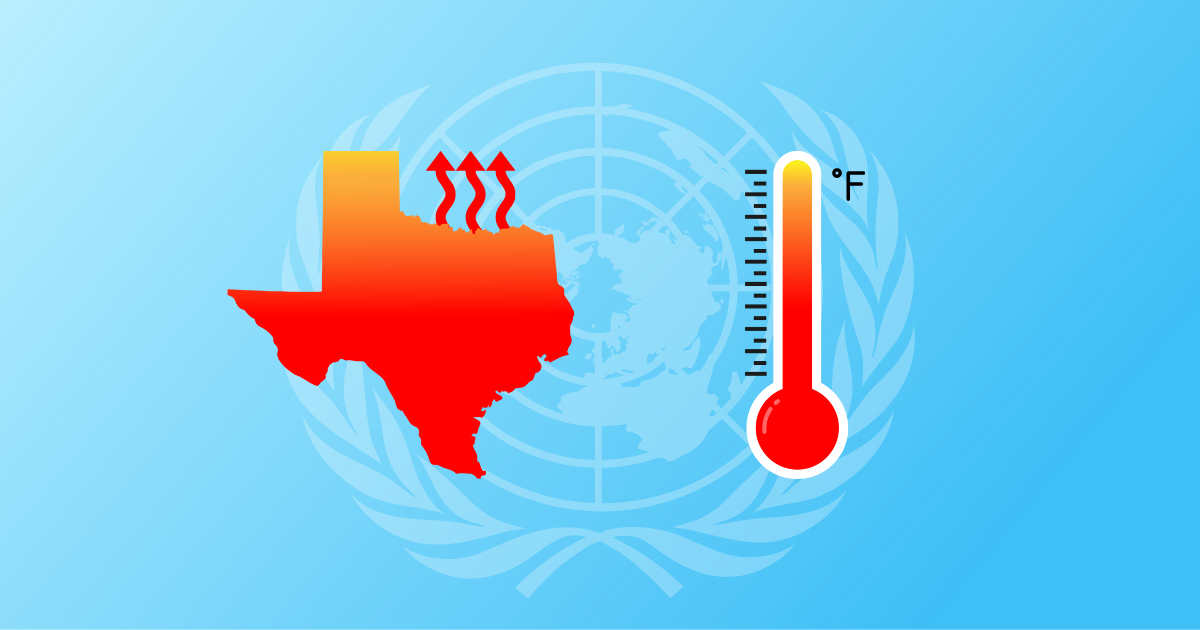The United Nations Intergovernmental Panel on Climate Change (IPCC) recently released the second part of its sixth assessment report, a sprawling 3,500-page analysis of the climate crisis and its impact on humanity.
The most concerning news to come out of the ongoing report is just how close the globe is to warming 1.5°C above pre-industrial levels, a target most of the world agreed to avoid in the 2015 Paris Climate Accords.
It’s a number climate activists and scientists have focused on for more than a decade as the figure to indicate when shit hits the fan, so to speak.
Already, roughly half the world’s population currently experiences severe water scarcity for at least some part of the year, according to the report. Approximately half of all assessed species (in the tens and thousands) have moved to higher elevation or toward the poles to survive. Perhaps most frighteningly: between 3 to 14% of land-based species face a very high risk of extinction at global warming levels of 1.5°C.
The 1.5 target owes itself to the Alliance of Small Island States, an intergovernmental organization made up of low-lying coastal and island nations in the Caribbean, Pacific and Africa. In 2009, these countries argued bravely at the Copenhagen Climate Change Conference for the 1.5°C target.
One member country, the tiny Polynesian island nation of Tuvalu, brought negotiations to a standstill to push for 1.5°C. The president of Maldives, another member nation in the Indian Ocean, asked, “How can you ask my country to go extinct?”
If Texas leaders knew how much the state was risking with 1.5 and beyond, or if the oil & gas industry had never sunk its teeth into state politics, the Lone Star State might have argued for 1.5 alongside them.
In 2018, the IPCC released a report devoted to the 1.5°C target, warning that breaching the threshold risked irreversible damage and loss of ecosystems. They warned emissions would need to be cut by almost half by 2030 — a 12-year deadline that became a hallmark of U.S. progressives pushing for a Green New Deal, the most ambitious domestic plan yet to tackle the climate crisis, but one that was actually quite reasonable compared to what UN climate scientists recommended: “rapid and far-reaching transitions in energy, land, urban and infrastructure (including transport and buildings), and industrial systems” that would be “unprecedented in terms of scale” — humble academic speak for “everything must go.”
Four years later, the UN’s sixth assessment report is more detailed and less optimistic about humanity’s projected ability to stay below 1.5°C.
“Near-term actions [2021-2040] that limit global warming to close to 1.5°C would substantially reduce projected losses and damages related to climate change in human systems and ecosystems, compared to higher warming levels, but cannot eliminate them all,” the report reads.
In five best-to-worst case emission scenarios forecast by the authors, they predict, “there is at least a greater than 50% likelihood that global warming will reach or exceed 1.5°C in the near‐term, even for the very low greenhouse gas emissions scenario.”
Every projection put forth by the authors has global warming reaching 1.5°C by 2030, and as mentioned, even the best-case emissions scenario will see average surface temperatures reach that point and then eventually return to the 1.5 target half a century from now, sometime beyond 2060.
In Texas, 1.5 means more severe storms and hurricanes, more extreme flooding, hotter summers and hotter heat waves, freshwater scarcity, and irreversible damage to ecosystems, particularly in the Gulf of Mexico where coral reefs, like elsewhere around the world, are expected to face a 95% decline.
Texas is already facing most of these effects. Average surface temperatures along the Texas coast have warmed by at least 1°F (or about 0.5 °C) in the past century, U.S. Environmental Protection Agency data shows. In West Texas and the Panhandle, temperatures have risen 1.5 to 2°F, or about one degrees Celsius.
“I think we can look around and see that severe things are happening now,” Stephanie Thomas, a Public Citizen climate crisis researcher with a doctorate in earth sciences, told the Signal. “For instance Harvey, some of the attribution science has said that climate change played a really strong role in fueling how bad that storm was.”
Hurricane Harvey is cited as a case study in the new UN report as an example of an extreme weather event worsened by climate change, a disaster the authors point out further exacerbated inequities across racial and social lines when it came to post-disaster needs and recovery.
The grisly citation sits beside other recent extreme flooding events, as well as the 2017 mega fires in Chile and in Australia in 2019, and a heatwave in Europe in 2019 that was described as the most lethal natural disaster of that year.
Thomas said the amount of greenhouse gasses that have been put into the atmosphere have already done some damage, and even if we could stop emitting tomorrow, unavoidable residual impacts will still occur.
“I don’t know, I honestly have some rage about the whole situation because I learned about climate change when I was a kid and it’s been decades of little action,” Thomas said, reacting to the UN report. “To see reports like this one come out, and you know it’s the same message, ‘we have to do something, we have to do it now.’ And seeing the lack of political will — which the report did mention as one of the issues in North America, the political challenges and polarization as one of the factors in not addressing the crisis — so yeah, rage is one of my dominant emotions in reading this.”
Michael Lewis, a biologist formerly with the Texas Parks and Wildlife Department now working as a clean air and water advocate for Environment Texas said the Lone Star State is already experiencing hotter summers, stronger storm events and issues with water supply.
“One of the things that really leapt out to me in the report was them just coming out and saying we are locked into an increase, we’re going to get hit with climate change at this point,” Lewis said.
The focus of the new report, he said, was on mitigation and keeping the damage as low as possible — a subtle acknowledgment by the authors that to some degree humanity lost the race against time.
Lewis said part of the problem is the difficulty in translating the urgency when it comes to talking about a couple of degrees in global average surface temperatures.
“The difference between us and an ice age is a little bit over four degrees Celsius,” Lewis said. “And I don’t think people understand that a couple of degrees is really life-changing for humanity. A couple of degrees Celsius is crop failure, wide-scale flooding.”
One of the more immediate problems Texas would face in the next decade would be water shortages due to drier, hotter conditions. This is because while rainfall will be more intense, instances of rain will be less frequent overall. A 2020 study by researchers with Texas A&M University and University of Texas at Austin projects conditions in Texas this century will be more arid than at any point in the last 1,000 years.
“We need to continue to reduce emissions, just because 1.5 is still survivable,” Lewis said. “But we need to start pumping the breaks. We’re going to hit the wall, but right now we haven’t even taken our foot off the gas.”
The climate crisis is not a light switch; the 1.5°C target is artificial, an imaginary line drawn in the sand by world leaders who bargained that was the most acceptable amount to fry the Earth by.
That complacency has cost Texas a lot. State leaders may not acknowledge the climate crisis, but the proof is in the mounting misery and the receipts of the state budget, where the amount taxpayers dish out for disaster recovery has increased each legislative session, rubber stamped by the same lawmakers who have prevented state agencies from studying climate change.
It’s difficult to fathom the scope of the climate crisis that is already impacting Texas. The latest science on the crisis is grim, and it asks Texans to worry, not about how soon or when, but how bad, and what kind of state we want to live in during the crisis.
Fernando covers Texas politics and government at the Texas Signal. Before joining the Signal, Fernando spent two years at the Houston Chronicle and previously interned at Houston’s NPR station News 88.7. He is a graduate of the University of Houston, Jack J. Valenti School of Communication, and enjoys reading, highlighting things, and arguing on social media. You can follow him on Twitter at @fernramirez93 or email at fernando@texassignalarchive.com





